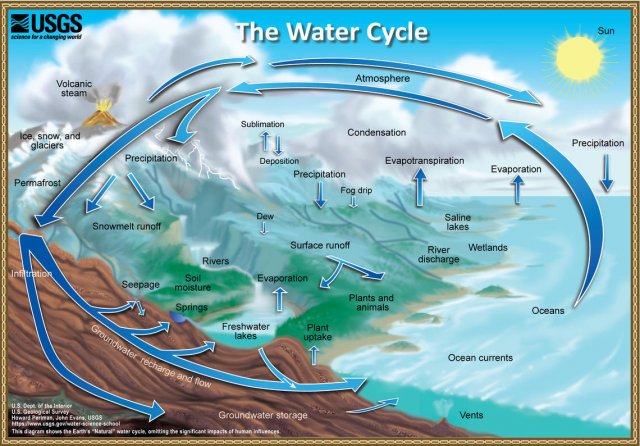Groundwater: Understanding and Protecting Our Hidden Resource

Published October 18, 2021
Groundwater is one of the most extracted raw materials in the world, providing about half of the drinking water supply worldwide. This source of drinking water is found underground, so unlike the visible lakes and rivers around us, this resource is not something most of us think about very often.
EPA researchers have long studied the fundamentals of groundwater science to protect and restore it, including how water is transported through the subsurface and how contaminants can move underground.
Groundwater supplies are highly dependent on rainfall reaching the ground, and then moving downward through the soil to the aquifer. On natural or planted surfaces, some of the falling rain penetrates the soil, like water percolating through coffee grounds, eventually reaching and replenishing the groundwater stores underground. But often our modern cityscapes, paved roads, parking lots, and other hard surfaces don’t always allow the rain to naturally reach the soil. Instead, it runs off these surfaces to nearby surface waters, or is transported to wastewater treatment plants via sewer systems, where it’s often discharged to surface waters. When groundwater supplies are not replenished by rainfall, the underground storage volume decreases. Incorporating features like rain gardens and permeable pavements is one way to help increase the amount of rainfall reaching the ground, giving the water cycle and groundwater supplies a boost.
EPA researchers are developing applications and tools for understanding processes like groundwater flow models, contaminant transport models, and how different subsurface materials, like different types of rock, affect the movement of both water and contaminants.
As water moves from place to place – whether it’s soaking into the ground in a field, running down a street gutter, or infiltrating through a built system like a rain garden – it can carry along contaminants that it may encounter. Road salts from de-icing operations, oil and gas products from cars, pesticides and lawn fertilizers, heavy metals, litter, and pathogens from animal waste are all present in the environment and can be carried away by water. Regardless of where a pollutant enters our water supply, it can persist as it moves through the water cycle.
“EPA is focused on protecting groundwater to maintain quality sources of drinking water,” said the Office of Groundwater and Drinking Water Director, Jennifer McLain. “EPA researchers provide the scientific basis for EPA’s policies and regulations protecting groundwater.”
EPA is also researching the use of stormwater and treated wastewater for aquifer recharge, and how green infrastructure practices and fertilizer applications in agricultural operations can affect groundwater quality.
The movement of water in the water cycle is continuous and connected, and our behaviors and activities are part of that cycle. Groundwater quality and quantity is affected by human activities, both beneficial and harmful. While we can’t see groundwater the way we can see lakes and streams, groundwater shouldn’t be left out of the conversation about clean water or the efforts to protect it.
Read More about EPA’s Groundwater Research:
Science Matters: Over 50 Years of Groundwater Research at EPA’s Kerr Lab in Ada, Oklahoma
Science Matters: Protecting Groundwater Resources within the Arbuckle-Simpson Aquifer in Oklahoma
